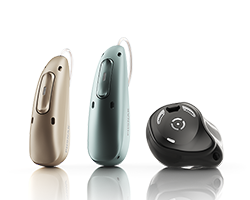
Artificial Intelligence for Hearing Aids

Improved Sound Quality
One of the biggest benefits of AI in hearing aids is better sound quality. Early hearing aids often had issues with background noise, which made it hard for users to hear conversations. AI technology can now distinguish between different sounds and focus on what's important.
AI algorithms in modern hearing aids can reduce unwanted background noise. These algorithms identify and suppress noises like traffic or wind, making it easier to hear conversations and other important sounds. This is especially helpful in busy environments like restaurants or city streets.
Another great feature of AI in hearing aids is voice recognition. Using AI, these devices can detect speech and separate it from other sounds. This makes it much easier to follow conversations, even in noisy places. AI can also learn to recognize specific voices, making it easier for users to hear friends and family.
Personalized Hearing Experience
AI allows for a more personalized hearing experience. Hearing loss affects everyone differently, and AI technology helps cater to individual needs.
AI in hearing aids can learn over time. These devices monitor how users react to different sounds and adjust settings accordingly. For example, if a user often turns up the volume in certain situations, the hearing aid can start to do this automatically.
AI can also detect different environments and adjust settings to provide the best hearing experience. Whether in a quiet room, a crowded space, or outdoors, AI-powered hearing aids can optimize sound levels and clarity.
Connectivity and Integration

AI technology in hearing aids is not just about sound; it's also about connectivity. These devices are becoming more integrated with other technologies and devices, adding convenience and improving the user experience.
Many AI hearing aids can connect to smartphones. This allows users to control their hearing aids through an app, making it easy to adjust settings, check battery levels, and more. The app can also provide insights into hearing health and suggest improvements.
AI hearing aids are also compatible with other devices like TVs and computers. This makes it easier to stream audio directly to the hearing aids, providing clear and direct sound without disturbing others. Integration with smart home devices is also becoming more common, adding another layer of convenience.
Health Monitoring
AI technology in hearing aids goes beyond hearing. These devices can also help monitor one’s overall health.
Some AI hearing aids come with built-in activity tracking. This feature can monitor physical activities such as walking or running and provide health-related insights. Staying active is important for health, and activity tracking can help users meet fitness goals.
For older adults, fall detection is a critical feature. AI-powered hearing aids can detect falls and send alerts to family members or emergency services. This provides an extra layer of safety and peace of mind.
The Future of AI in Hearing Aids
The future looks bright for AI hearing aids. Researchers and developers are continually working on new ways to improve these devices. Innovations like real-time language translation and enhanced sound localization are on the horizon. As technology continues to advance, hearing aids will become even more effective and user-friendly.
Real-time translation could be a game-changer for hearing aids. Imagine traveling to a foreign country and being able to understand the local language through hearing aids. This technology is still in development, but it's a promising area for future improvement.
Sound localization helps pinpoint the direction of sounds. Enhanced sound localization using AI can make it even easier to identify where sounds are coming from, improving one’s overall hearing experience.

